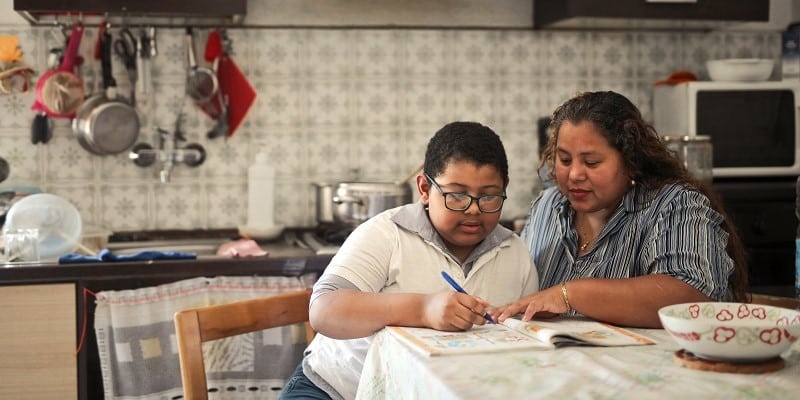Alarm bells of the COVID-19 slide have activated parents to organize and redesign their children’s learning experiences in unprecedented ways. Many parents are continuing to reject school reopening plans to instead opt into microschools. Others are homeschooling, co-creating in-home learning pods, or simply opting out of enrolling their child altogether. Though many families have taken a much more active role in their children’s learning, most, like me, find that being the primary facilitator of their children’s learning is neither appealing nor practical. A number of surveys indicate that parents are currently frustrated with a lack of guidance from their schools and, therefore, committed to engaging differently with their schools moving forward.
For example, Learning Heroes, a national parent empowerment nonprofit, conducted one such parent survey in April 2020 that revealed half of respondents sought personal guidance on how to best support their child at home, but only 15% received it from their schools this past spring. In August 2020, a national survey conducted by TalkingPoints, a multilingual communication platform between teachers and families, revealed an agreement between the majority of parent and teacher respondents that home-school connections were more important than ever for supporting students.
The results of both surveys suggest that schools must rethink traditional parent-school communications in order to create authentic two-way supports that offer both better visibility into how students are faring and more frequent, tailored designs to help them succeed.
Shifting from serving students in a classroom to students within a learning ecosystem
TalkingPoints, along with other programs, recognize that being in communication with parents is not the same as being “in relationship” with them. How can more schools begin to thoughtfully redesign their parent engagement playbooks so that strategies for strengthening relationships don’t stop with the student but are inclusive of the family—especially those families that aren’t as well-resourced as others? The TalkingPoints survey, for instance, revealed that Spanish-speaking parents are significantly less likely (39%) to feel very prepared to support their child’s learning at home compared to English-speaking parents (51%).
To start, understanding how the components in the teacher-family-student triangle fit into both a school’s architecture as well as the student experience is crucial. The Theory of Interdependence and Modularity can help.
According to Modularity Theory, a framework that explains how a system’s architecture influences its performance, the most direct way to improve a system’s (a school’s) performance is to integrate the pieces with the biggest influence (families). However, because many school systems seek financial or operational efficiency, modular systems, in which students and families must seek out support through a series of disconnected channels and programs not tailored to their circumstances, are often the popular option. Yet some school systems prefer an interface that integrates families with school operations, and it’s this type of integrated system that’s often a key lever for driving student learning gains. A closer integration among parents and educators can shed light for both parties on what students most need to thrive, and as my colleague, Tom Arnett has argued, can maximize students’ learning and expand opportunities beyond the traditional classroom.
Put simply, if schools hope to produce breakthrough results for the students they serve, they will need to integrate social supports alongside academic ones. Specifically, schools must establish a strong understanding of the resources and care flowing through students’ most personal networks: their families and caregivers. While some may view coordinating with families as yet another costly logistical burden, COVID-19 has laid bare how this untapped reservoir of latent relationship capital may be the linchpin of students’ success in the year to come. Without ensuring that students have access to both caregivers’ and families’ support and crucial learning resources, the best laid academic plans may fall short.
Learning from real-world examples
Fortunately, promising models that tightly integrate families and schools do exist. Take, for example, PowerMyLearning, a framework and a tool that connects teachers, families, and students and deliberately integrates efforts to engage families with efforts to improve academics through collaborative homework activities between the child and caregiver. The organizations’ curated Family Playlists are a great example of the work they do to strengthen the teacher-family-student triangle. According to the organization’s CEO and Co-Founder Elisabeth Stock, these playlists differ from traditional approaches to family engagement in three ways:
First, these playlists enable families to support their children’s learning at home instead of relying on classroom-only learning. Second, the playlists put families in the role of teammate and supporter (versus the traditional role of enforcer). Third, the playlists make family engagement measurable because teachers and principals can track family participation through the school year, and in turn, work to improve it. As a result, benefits to families have included learning gains for students as well as improved relationships between families and the school. For students without an engaged family member, schools can help identify a supportive and caring adult within a child’s life to help with their learning.
Efforts to integrate families within the fabric of students’ learning experiences were afoot pre-COVID. But one thing is clear: The pandemic has pushed students out of physical classrooms and into a larger ecosystem of at-home learning that must be navigated to support their continued success and engagement; parents and families are a crucial resource in that broader ecosystem and will continue to be post-COVID. As Heejae Lim, the founder and CEO of TalkingPoints, said, “Family engagement is always a worthy goal, but the pandemic has made us seek out tools and methods to try to achieve it in culturally sensitive ways, even in the toughest of circumstances. Those lessons and tools need not be abandoned if and when we return to the classroom. Those learnings are ours to keep. Some good can come from these difficult times.”
Is your school or program committed to engaging parents differently? Do you have a model of integrating parents into your student support or learning strategies? If so, please reach out and share!



